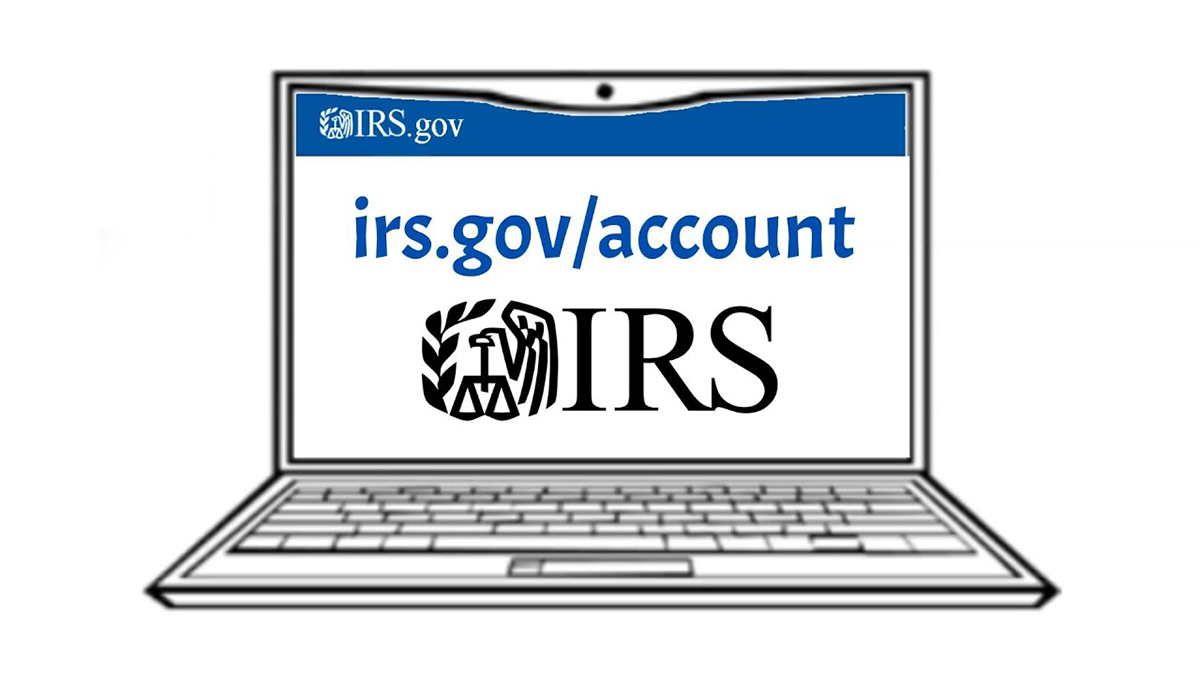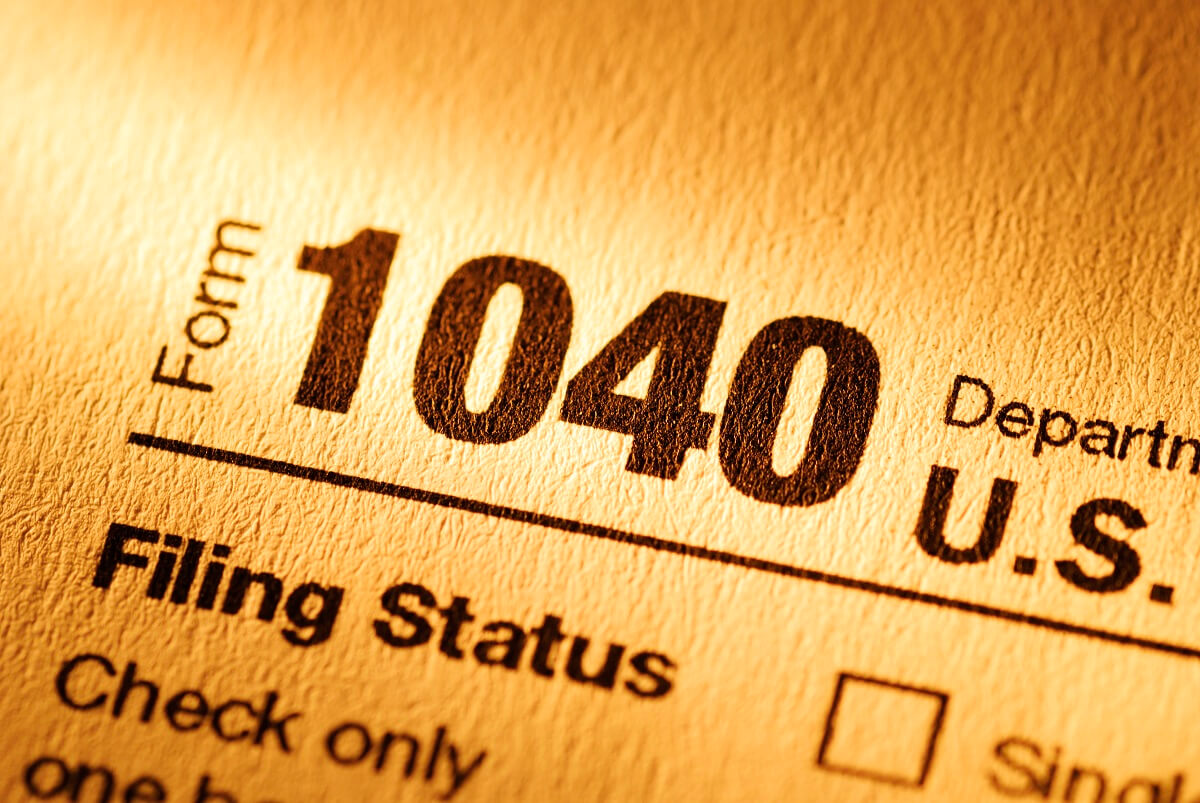

Finance
How Far Back Can I Amend My Tax Return
Published: October 28, 2023
Learn how far back you can amend your tax return and get your finances in order. Discover the rules and regulations to ensure a smooth process.
(Many of the links in this article redirect to a specific reviewed product. Your purchase of these products through affiliate links helps to generate commission for LiveWell, at no extra cost. Learn more)
Table of Contents
Introduction
Amending a tax return may seem like a daunting task, but it can be a necessary step to correct any errors or make changes to your previously filed return. Whether you made a simple math error or need to include additional income or deductions that you overlooked, amending your tax return ensures that you are reporting accurate information to the Internal Revenue Service (IRS).
In this article, we will delve into the specifics of tax return amendments, including the timeframe for making changes, the statute of limitations, and the process of amending both current and prior year tax returns. Understanding these important details will help you navigate the tax amendment process more effectively.
It’s important to note that filing an amended tax return isn’t just about rectifying mistakes; it can also be a strategic move to maximize your tax savings. By taking advantage of overlooked deductions or credits, you may be able to reduce your tax liability and potentially receive a tax refund.
Before we delve into the specifics of amending tax returns, let’s first understand what it means to amend a tax return in the first place.
Understanding Tax Return Amendments
When you file a tax return, you are reporting your income, deductions, credits, and other relevant financial information to the IRS. However, it is not uncommon for errors or omissions to occur during this process. This is where tax return amendments come into play.
A tax return amendment is simply a revised version of your original tax return. It allows you to correct any mistakes or make changes to the information you initially reported. Amending a tax return ensures that you are providing accurate and updated information to the IRS.
There are numerous reasons why you might need to amend your tax return. Some common scenarios include:
- Mistakes in reporting income or deductions
- Failure to report income from sources such as freelance work or investments
- Overlooking eligible deductions or credits
- Receiving additional tax documents after filing your original return
It’s important to note that not all changes to your tax return require an amendment. Minor mistakes, such as simple math errors, are often corrected by the IRS without the need for an amendment. However, if the error results in a change to your tax liability or affects your eligibility for certain credits or deductions, you will need to file an amended tax return.
Now that we have a clear understanding of what tax return amendments are, let’s move on to discussing the timeframe for amending tax returns.
Timeframe for Amending Tax Returns
The timeframe for amending a tax return depends on whether you need to amend a current year tax return or a prior year tax return. Let’s take a closer look at each scenario:
Amending a Current Year Tax Return
If you need to make changes to a tax return for the current year, you have until the tax filing deadline, which is typically April 15th, to file an amended return. For example, if you filed your 2021 tax return on April 15, 2022, you have until April 15, 2023, to amend it.
However, it’s important to note that you cannot file an amended tax return electronically. Instead, you must submit a paper Form 1040X, Amended U.S. Individual Income Tax Return, to the IRS. This form allows you to explain the changes you are making and provide the correct information.
Amending a Prior Year Tax Return
If you need to amend a tax return for a previous year, the timeframe for doing so is generally within three years from the original filing date or within two years from the date you paid the tax, whichever is later.
For example, if you filed your 2018 tax return on April 15, 2019, and paid your taxes on May 1, 2019, you have until May 1, 2022, to amend the return. However, if you filed your return late, such as in October 2019, your deadline to amend the return would be based on the original filing date.
It’s important to note that if you are amending a tax return to claim an additional refund, you must generally do so within two years from the date you paid the tax or within three years from the date you filed the original return, whichever is later. Failing to claim a refund within this timeframe may result in the funds being forfeited.
Now that we understand the timeframe for amending tax returns, let’s take a closer look at the statute of limitations for amending tax returns.
Amending a Current Year Tax Return
Amending a current year tax return involves making changes to a return that you have already filed for the most recent tax year. Here are the key steps to follow when amending a current year tax return:
1. Gather the necessary documents:
Before you start the amendment process, make sure you have all the relevant documents, including your original tax return, any additional tax forms or schedules, and any supporting documentation for the changes you are making.
2. Complete Form 1040X:
To amend your current year tax return, you will need to complete Form 1040X, Amended U.S. Individual Income Tax Return. This form allows you to provide the corrected information and explain the changes you are making.
3. Explain the changes:
When completing Form 1040X, you will have the opportunity to explain the specific changes you are making to your original tax return. Clearly and concisely describe the changes and the reasons for making them.
4. Provide supporting documentation:
If the changes you are making involve additional income, deductions, or credits, make sure to include any necessary supporting documentation. This could include receipts, invoices, or any other relevant documentation that validates the changes you are making.
5. File the amended return:
Once you have completed Form 1040X and gathered all the necessary documentation, you will need to mail it to the appropriate IRS processing center. Keep in mind that amended returns cannot be filed electronically. The IRS provides specific instructions for where to send your amended return based on your location, so make sure to follow those guidelines closely.
6. Wait for the outcome:
After filing the amended return, it may take some time for the IRS to process and review your changes. You can check the status of your amended return using the IRS’s “Where’s My Amended Return?” online tool. Keep in mind that it can take up to 16 weeks for the IRS to process an amended return.
Amending a current year tax return can be a straightforward process if you follow these steps carefully. Now, let’s explore the process of amending a prior year tax return.
Amending a Prior Year Tax Return
If you need to make changes to a tax return from a previous year, the process of amending your return is slightly different than for a current year return. Here’s what you need to know:
1. Obtain the correct forms:
When amending a prior year tax return, you will need to use the appropriate form for the tax year you are amending. For example, if you are amending your 2019 tax return, you will need to use Form 1040X for the 2019 tax year.
2. Gather supporting documentation:
Collect all the necessary supporting documentation for the changes you are making. This includes any additional forms, schedules, or documentation that validates the changes you are making to your original return.
3. Complete Form 1040X:
Fill out Form 1040X, indicating the tax year you are amending and providing the corrected information. Include a detailed explanation of the changes you are making and the reason for the amendment.
4. Attach necessary documents:
Make sure to attach any supporting documentation that verifies the changes you are making. This can include corrected forms, schedules, or any other relevant documentation.
5. Mail the amended return:
Unlike current year amended returns, prior year amended returns must be filed by mail. Refer to the instructions provided with Form 1040X to determine the appropriate address for mailing your amended return.
6. Be patient with the processing:
It’s important to note that the processing time for amended returns can be longer than for original returns. The IRS typically takes around 16 weeks to process an amended return, so be patient while awaiting the outcome.
Amending a prior year tax return gives you the opportunity to correct any errors or claim missed deductions or credits you were eligible for. By following these steps and supplying the necessary documentation, you can ensure that your amended return is processed correctly.
Next, let’s discuss the statute of limitations for amending tax returns, as it’s an essential factor to consider when deciding to amend a return.
Statute of Limitations for Amending Tax Returns
When it comes to amending tax returns, it’s important to keep in mind the statute of limitations imposed by the IRS. The statute of limitations determines the timeframe within which you can make changes to your tax return. Let’s explore the statute of limitations for amending tax returns:
The general rule is that you have three years from the original due date of the tax return or two years from the date you paid the tax, whichever is later, to file an amendment.
For example, if you filed your 2020 tax return on time by the April 15, 2021 deadline, you have until April 15, 2024, to amend it. If you filed your 2020 tax return late and paid the tax on June 1, 2021, you have until June 1, 2023, to amend the return.
It’s important to note that the statute of limitations varies for certain situations:
- If you are amending a return to claim an additional refund, you generally have two years from the date you paid the tax or three years from the date you filed the original return, whichever is later.
- If you filed a claim for a loss from worthless securities or a bad debt deduction, the statute of limitations is extended to seven years.
- If you failed to report income that is more than 25% of the gross income shown on your original return, the statute of limitations extends to six years.
It’s crucial to keep track of the statute of limitations to ensure that you file any necessary amendments within the allowed timeframe. Failing to amend a return within the statute of limitations may result in the IRS rejecting your amendment or disallowing any changes to your return, potentially leading to penalties or interest owed.
Now that we have a clear understanding of the statute of limitations for amending tax returns, let’s move on to the process of amending a tax return and the potential consequences of filing an amended return.
How to Amend a Tax Return
If you need to amend a tax return, whether it is for the current year or a prior year, following the correct process is vital. Here are the steps to take when amending a tax return:
1. Obtain the correct form:
For amending a tax return, you will need to use Form 1040X, Amended U.S. Individual Income Tax Return. Ensure you download or request the correct form for the specific tax year you are amending.
2. Fill out Form 1040X:
Complete Form 1040X, providing your personal information and details from your original tax return. Indicate the changes you are making in column A, the original amounts in column B, and the corrected amounts in column C.
3. Explain the changes:
On Form 1040X, you will find Part III, where you can explain the reasons for amending your tax return. Clearly and concisely describe the changes you are making and provide any necessary supporting documentation.
4. Attach supporting documents:
Include any supporting documents that validate the changes made in the amended tax return. This could include corrected forms, schedules, or any relevant documentation that supports the changes you are making.
5. File the amended return:
Unlike original tax returns, amended returns cannot be filed electronically. Mail your completed Form 1040X, along with any necessary attachments, to the appropriate IRS processing center. Refer to the specific instructions provided with Form 1040X for the correct mailing address.
6. Track the status:
After mailing the amended return, you can track its progress using the IRS’s “Where’s My Amended Return?” tool. This online tool allows you to monitor the status of your amended return and provides updates on its processing.
Remember to keep copies of all documents related to your amended tax return, including the completed Form 1040X and any attachments, for your records.
Now that you know the process for amending a tax return, let’s explore the potential consequences of filing an amended return.
Consequences of Filing an Amended Tax Return
When you file an amended tax return, there are several possible consequences that you should be aware of. Although the primary purpose of filing an amendment is to correct errors or claim missed deductions, it’s essential to understand the potential outcomes of this action:
1. Additional taxes owed:
If the changes made in your amended tax return result in an increase in your tax liability, you may be required to pay additional taxes. This can occur if you overlooked income or claimed ineligible deductions or credits on your original return.
2. Refund adjustments:
If you are amending your tax return to claim additional deductions or credits, it could potentially result in a larger tax refund being issued to you. Conversely, if the amendments reduce your deductions or credits, your original refund amount may be adjusted or even reduced.
3. Penalties and interest:
If the IRS discovers that you underpaid your taxes due to errors or omissions on your original tax return, you may be subject to penalties and interest on the outstanding amount owed. It’s crucial to provide accurate and complete information when filing your amended return to avoid these potential consequences.
4. Extended audit potential:
Filing an amended tax return may increase the likelihood of being audited by the IRS. If your amendments raise red flags or if the IRS chooses to review your revised return, they may initiate an audit to verify the accuracy of the changes made.
5. Future tax implications:
Amending a tax return can also have implications for future tax years. It may prompt the IRS to scrutinize your future returns more closely or result in changes to your tax profile that could impact your eligibility for certain deductions, credits, or benefits.
It’s important to note that while filing an amended tax return may have consequences, it is always better to correct errors or claim missed deductions as soon as possible. Failing to address inaccuracies or discrepancies could lead to more significant issues down the line.
Now that we’ve explored the potential consequences of filing an amended tax return, let’s summarize what we’ve covered in this article.
Conclusion
Amending a tax return is an important process that allows individuals to correct errors, claim missed deductions, and ensure accurate reporting to the IRS. Whether you need to amend a current year tax return or a prior year tax return, understanding the timeframe and following the correct procedures is crucial.
When amending a current year tax return, gather the necessary documentation, complete Form 1040X, and provide a detailed explanation of the changes being made. Remember to file the amended return by mail and be patient during the processing period.
For amending a prior year tax return, use the correct form for the specific tax year, provide supporting documentation, and clearly explain the changes being made. File the amended return by mail and allow adequate time for processing.
Understanding the statute of limitations is essential, as it determines the timeframe within which amendments can be made. Failing to file an amended return within the statute of limitations may result in the IRS rejecting the amendment or disallowing changes.
While there can be consequences to filing an amended tax return, such as additional tax owed or penalties and interest, it is important to rectify any errors and accurately report your financial information. Failure to do so may lead to further complications or scrutiny from the IRS.
In summary, amending a tax return is a necessary step in ensuring accurate reporting to the IRS. By following the proper procedures, providing supporting documentation, and understanding the potential consequences, individuals can correct mistakes, claim missed deductions, and maintain compliance with tax regulations.
Remember, if you are uncertain about amending your tax return, it is always a good idea to consult with a tax professional or seek advice from the IRS to ensure that you are taking the appropriate steps.














